The historic toll house at the base of the South Eastern Freeway was constructed in 1841 as a means for funding road construction from Adelaide to Mount Barker. As the only toll road in the colony of South Australia, this system generated significant public hostility and did not even come close to covering construction and maintenance expenses. The building’s use as a toll house was therefore stopped in 1847 to great public relief.
The Great Eastern Road
The road which since 1967 has been known as the South Eastern Freeway has been one of the State’s most important routes of transportation since before Adelaide itself was even founded. Indigenous Australians had travelled the relatively gentle slope of Glen Osmond for generations before European arrival. In the years immediately following the first wave of settlement, this track in particular became the favourite path between the plains of Adelaide and the agricultural land over the Hills to the east. Early settlers of Mount Barker agitated for the construction of a proper road, as the degrading track was increasingly dangerous for their drays and wagons travelling to Adelaide markets.
By January 1841, Governor George Gawler responded to public demands for a road linking Adelaide and Mount Barker by launching the construction of the Great Eastern Road. In direct contradiction to instructions from the South Australia Company in London that all colonial infrastructure should be built at settler expense, Gawler financed this construction with public funds. 200 workers were paid to turn the track into a serviceable road, and by May 1841 they were about three quarters complete. At this time, Governor Gawler was replaced by Governor George Grey, who immediately demanded the halt of this unauthorised project.
The Mount Barker settlers were greatly displeased by Grey’s decision, and petitioned him to resume construction. Grey agreed to allow the completion of the road, but no longer at public expense. Instead, an Act was passed soon after his arrival to create a trust of prominent settlers that would oversee the construction at their own expense. These trustees included all the Justices of the Peace in the colony, as well as twenty-five prominent landowners who were expected to benefit from the new thoroughfare. The way in which these trustees were expected to finance their operations was through the construction of a toll house at the base of the road, situated in such a place that it would be very difficult to sneak past. With the incentive of toll profits encouraging a quick resumption of work, the Great Eastern Road (and accompanying toll house) was officially opened in October 1841.
The Toll House
The toll house was a small hexagonal building directly adjoining a gate which blocked access to the Great Eastern Road. It was designed to be as comfortable as possible, as the tollkeeper lived there. Space was kept out the back for a vegetable garden. A table of fees was established, ranging from one shilling for ‘every coach, chariot, chaise, gig, hearse, caravan or other carriage, and every cart, waggon, dray, or other vehicle, if drawn by one horse or two bullocks’ to three shillings for those drawn by ‘six or more horses or eight or more bullocks’. The penalty for avoiding the toll was a fine of up to five pounds.
Almost immediately, it was evident that the expectations of the trustees for a profitable road were highly unrealistic. The funds generated by the tolls could not even afford the costs of road maintenance, let alone generate surplus income. After one year, the trustees were £1,179/12/0 in debt. After three years, they had barely improved to a deficit of £984.
A significant factor in creating this financial situation was local opposition to the imposition of a toll at all. Farmers in the region resented the fact that theirs was the only access to the markets of Adelaide subject to a fee. By 1843 the Colony was in a poor economic situation, and many residents to the east of Adelaide were already selling their produce at a loss even before the toll was factored in. This hit especially hard in winter when the days were short. As the toll granted unlimited passage on the road for a single day, farmers were given the choice of staying overnight in Adelaide at double the transportation cost, or rushing dangerously fast with the significant risk of injury or death to their bullocks. Letters to Adelaide newspapers sarcastically referred to the toll house as ‘the grossest imposition that was ever laid upon poor mortals’. Some anonymous writers claimed that a full two-thirds of settlers in the region were deliberately taking longer routes to Adelaide along tracks officially forbidden to access since the completion of the toll road. Regardless of the specific numbers, the toll was immensely unpopular.
It was readily apparent that the trustees of the Great Eastern Road had failed in their economic management of the thoroughfare. The tolls were generating around £20 a month, but the tollkeeper’s wages amounted to £10. As early as 1842 Governor Grey offered to buy out the trustees’ claims to the road with land grants, but this took until 1844 to be completed. As a result, the road was once again publicly owned and funded. Yet, even though the road was now just like any other in the Colony, Grey maintained the existence of the toll.
The End of the Toll Road
The major change to the system of tollkeeping that came from this shift away from the trust was that the Government would auction the right to levy tolls to the highest bidder, who then had sole claim to any money raised by the tolls. This change from a toll that nominally funded the improvement of the road to a toll that simply lined the pockets of the individual toll-keeper did not go down well with the already-hostile public. In 1845, one writer to the South Australian Gazette and Colonial Register claimed that although he supported a toll that ostensibly paid for road maintenance, the poor standard of the contemporary road meant that even he evaded the toll through illicit means. This arrangement was by no means necessarily advantageous to the toll-keeper either; in late 1847, for example, the toll-keeper requested to be absolved of paying rent as the poor condition of the road meant that almost no tolls were collected.
By 1847, it was evident that the system of toll-keeping on the Great Eastern Road was a failure. In November of that year, Sir Samuel Davenport made a motion in the Legislative Council that the toll was unfairly impacting the economic success of those settlers in the Mount Barker region. He also suggested that abolishing the toll would increase the volume of land sales in that area and therefore make South Australia more agriculturally productive. His arguments won out, and the toll was removed. Across the three years since the trustees’ had relinquished control of the road, the tolls collected amounted to £742/7/2, while the cost of road maintenance was £3,739/18/1.
With the tollhouse no longer needed, it was essentially ignored for decades and left to fall into a semi-ruined state. It was first restored in 1913 by the Intelligence and Tourist Bureau during a drive to preserve buildings from early settlement. This restoration replaced the roof of the toll house which had fallen into disrepair. It was again restored, this time more comprehensively, in 1951. The original toll-gates, thought lost, had recently been discovered on private property in Adelaide. While one was too damaged to recover, the other was repaired and re-instated on-site at a ceremony led by the Director of the Government Tourist Bureau. In attendance were a variety of political and cultural institutions, including the Royal Geographic Society, the Pioneers’ Association, and the Burnside and Mitcham Corporations. It was inscribed on the Register of the National Estate in 1978.
With the construction of the South Eastern Freeway in 1967, the toll house has been a prominent visible feature upon the arrival to or departure from Adelaide from the eastern parts of Australia. Located in between the two directions of traffic, however, the building itself has been inaccessible to the public for decades.


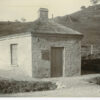

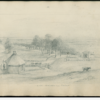
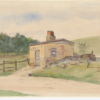
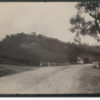
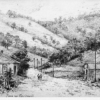
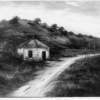
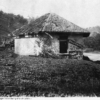
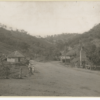
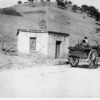
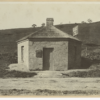
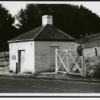

Comments